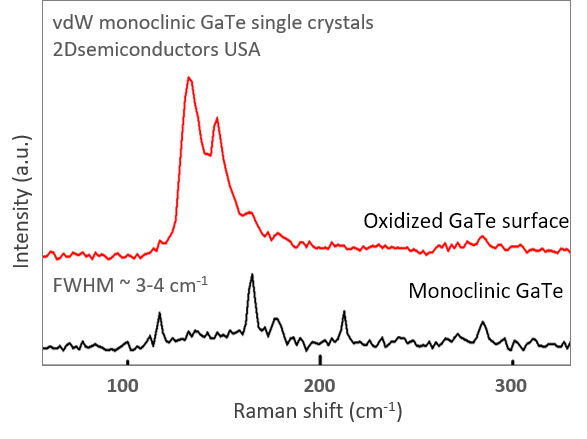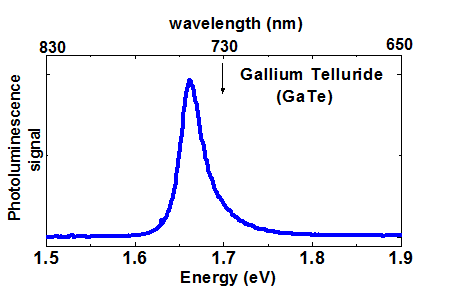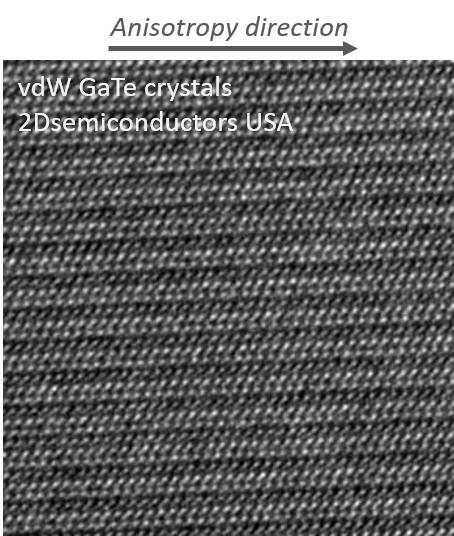 歡迎來到上海巨納科技有限公司網站!
歡迎來到上海巨納科技有限公司網站! 歡迎來到上海巨納科技有限公司網站!
歡迎來到上海巨納科技有限公司網站!






相關文章
Related Articles詳細介紹
Our single crystal monoclinic GaTe (Gallium telluride) crystals come with guaranteed anisotropy, electronic, and optical grade crystal quality. They are developed at our facilities using three different growth techniques, namely Bridgman growth, chemical vapor transport (CVT), and flux zone growth, to optimize grain sizes and reduce defect concentrations. In contrast to commonly used chemical vapor transport (CVT) technique, flux grown crystals are well known for their structural perfection and electronic/optical performance. Bridgman and flux zone methods both offer similar grade qualities. Each crystal very large in size to last for years, is highly crystalline, oriented in 0001 direction, and easy to exfoliate. Our R&D staff takes characterization dataset in each sample piece to ensure structural, optical, and electronic consistency.
Properties of monoclinic GaTe vdW crystals

Growth method matters> Flux zone or CVT growth method? Contamination of halides and point defects in layered crystals are well known cause for their reduced electronic mobility, reduced anisotropic response, poor e-h recombination, low-PL emission, and lower optical absorption. Flux zone technique is a halide free technique used for synthesizing truly semiconductor grade vdW crystals. This method distinguishes itself from chemical vapor transport (CVT) technique in the following regard: CVT is a quick (~2 weeks) growth method but exhibits poor crystalline quality and the defect concentration reaches to 1E11 to 1E12 cm-2 range. In contrast, flux method takes long (~3 months) growth time, but ensures slow crystallization for perfect atomic structuring, and impurity free crystal growth with defect concentration as low as 1E9 - 1E10 cm-2. During check out just state which type of growth process is preferred. Unless otherwise stated, 2Dsemiconductors ships Flux zone crystals as a default choice.




產品咨詢
聯系我們
上海巨納科技有限公司 公司地址:上海市虹口區寶山路778號海倫國際大廈5樓 技術支持:化工儀器網掃一掃 更多精彩

微信二維碼

網站二維碼